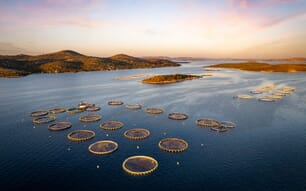Oceana estimates that the actual catches from fisheries in the Balearic Islands (Spain) for the period 1950-2010 are 2.3 times higher than the official totals.
The study, which has taken two years, is Oceana’s contribution to the Sea Around Us project led by Dr Daniel Pauly at the University of British Columbia. In this way, the Balearic Islands are a practical example within this initiative, which investigates the impact of fishing on the marine environment worldwide.
To perform the calculation, captures not found in the official records have been added to the official landings (248,000 tonnes). The total amount thus rises to 570.500 t, including the 24 per cent of sales on the black market and the 18 per cent of catches discarded overboard.
“Although the percentage of the unregistered catches in the Balearic Islands has decreased from 61 per cent in 1950 to 53 per cent in 2010, there are still more catches that are not recorded,” explained Xavier Pastor, senior vicepresident of Oceana.
“In order to properly manage fishing activity, it is necessary to know the actual amount that is being captured. Otherwise, it is impossible to know the extent of the resources and how to extract the maximum amount without compromising their survival.”
Recreational fishing is the percentage which has shown the biggest increase over time, with the catch in 2010 being higher than that of professional fishing using traditional methods, the percentages being 24 per cent and 11 per cent respectively, compared to the actual total estimated catch for that year. For this reason, an improvement in the management of recreational fishing is required.
In addition, over the last century fishing has changed from being an activity carried out mainly by fishermen, who have been replaced instead by more powerful engines in the trawling boats, bigger nets and industrial technology.
The number of fishermen has decreased from 5000 to around 700 in sixty years. Nevertheless, practically the same amount is captured as in 1950; but the quality and diversity of the catch has decreased, indicating a decrease in fishery productivity.
Species that were once abundant, such as the smoothound, the dogfish, the slipper lobster, grouper and amberjack, have declined. There are even species such as the spider crab, angel shark and nursehound that have disappeared from the waters of the Balearic Islands, and this is associated with overfishing.
“The new Common Fisheries Policy will help improve fishing records because of the obligation to land and record catches that were previously discarded,” concluded Marta Carreras, marine scientist at Oceana.
“In the same vein, we want this work to be duplicated in other regions to help improve fisheries management, so that this activity has a future, becoming a profitable and sustainable activity.”
The results of the research have been published by Oceana in an informative document that summarises the results of their collaboration in an international project called Sea Around Us, led by researchers at the University of British Columbia (UBC), and especially by Dr Daniel Pauly. This project aims to estimate the real catches in fisheries worldwide, and demonstrate the changes that fishing has suffered since the 1950s.


